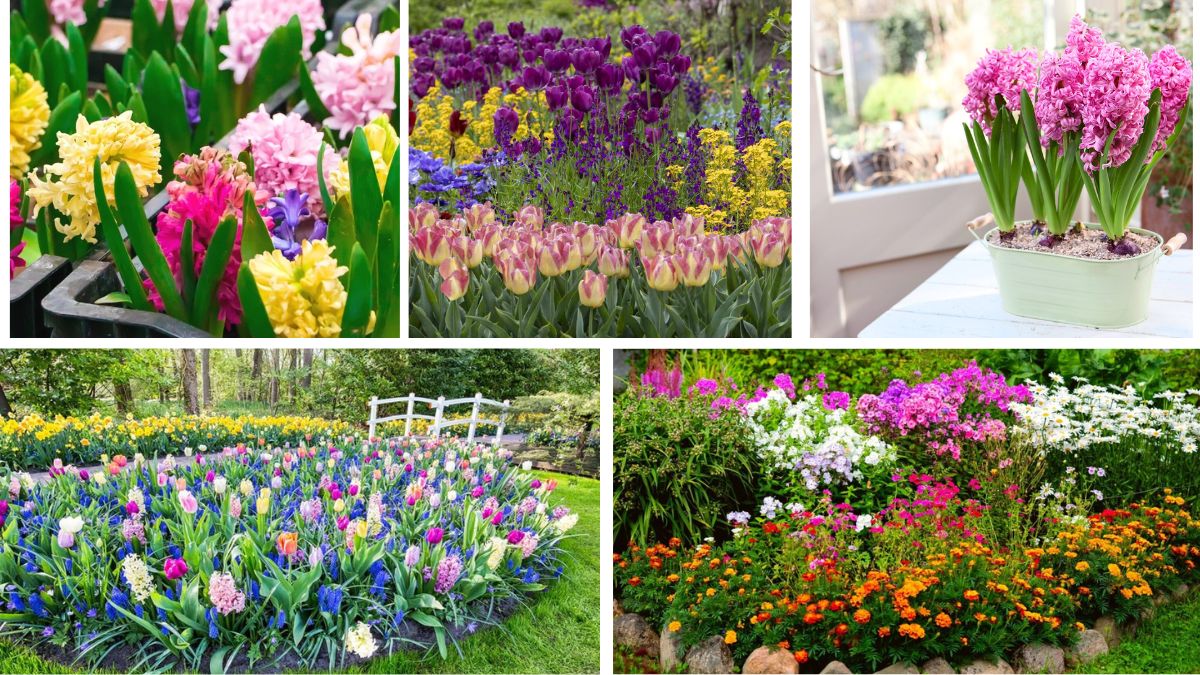Spring bulbs are one of the most exciting and rewarding elements of a garden. From tulips and daffodils to crocuses and hyacinths, these vibrant blooms bring color and life after the cold, gray months of winter. However, achieving a stunning spring display requires timely planting and proper preparation. Plant too early or too late, and you risk delayed blooms, poor growth, or even rotting bulbs.
In this article, we’ll explore when and how to plant spring bulbs, the best soil and site conditions, care tips, and strategies for ensuring your garden bursts into color each spring.
Understanding Spring Bulbs
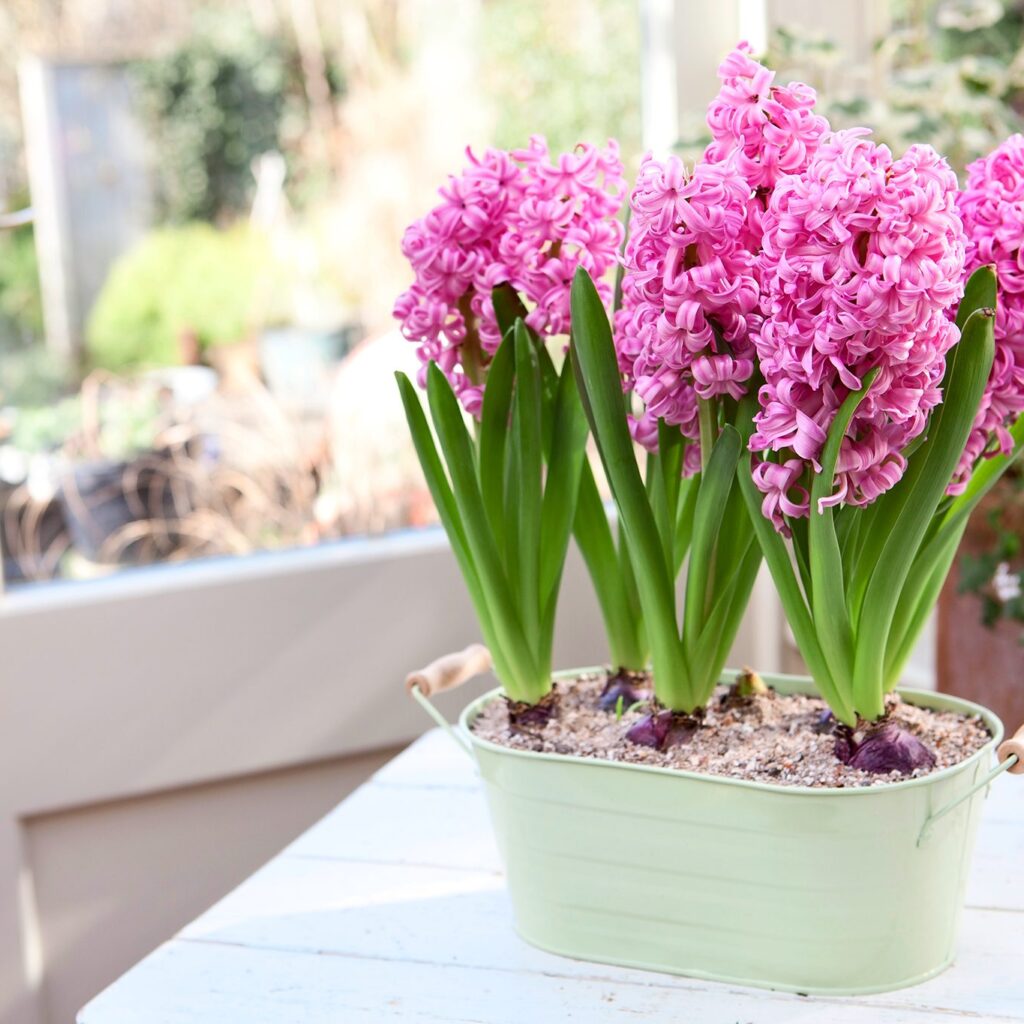
Spring bulbs are perennial plants that grow from underground storage organs, storing energy to produce beautiful flowers each year. Popular spring bulbs include:
- Tulips – Elegant, vibrant, and available in countless varieties.
- Daffodils (Narcissus) – Hardy and cheerful blooms, often naturalizing over time.
- Crocuses – Early bloomers that herald the first signs of spring.
- Hyacinths – Fragrant and colorful, ideal for garden borders and containers.
- Alliums – Unique globe-shaped blooms adding architectural interest.
Spring bulbs require a period of cold dormancy, making timing crucial for successful flowering.
When to Plant Spring Bulbs
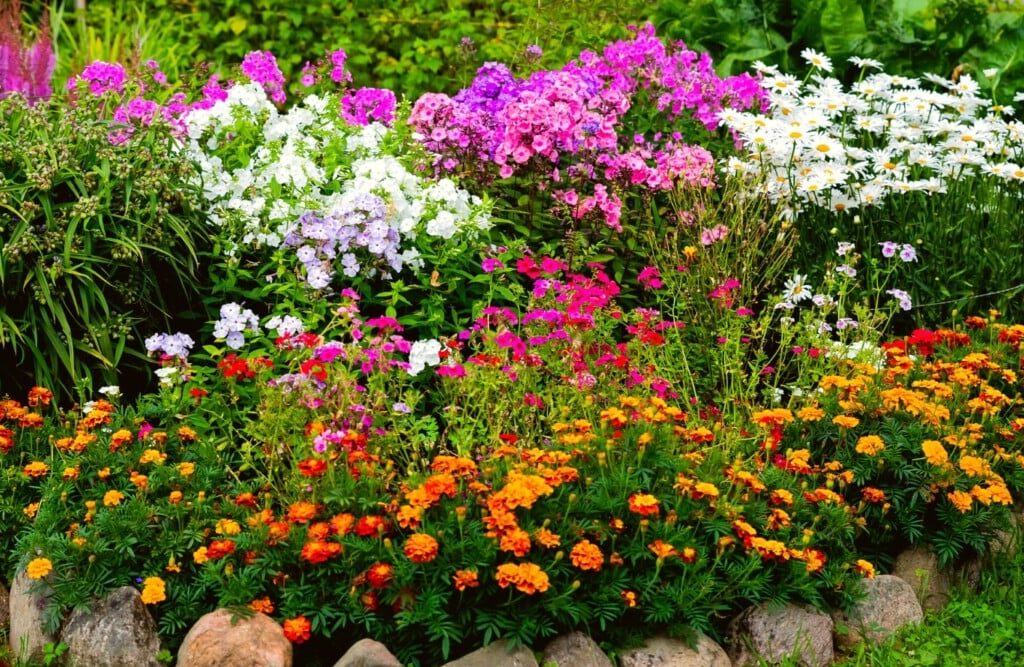
The key to gorgeous spring blooms is planting bulbs at the right time, typically in autumn, before the ground freezes.
General Guidelines:
- Planting window: Usually from late September to early November, depending on your climate.
- Soil temperature: Plant when soil is cool but not frozen, around 50–60°F (10–15°C).
- Cold exposure: Bulbs need 6–12 weeks of cold temperatures to initiate root growth and flower development.
Regional Timing:
- Cold Climates (Zones 3–5)
- Plant bulbs 4–6 weeks before the first hard frost.
- Daffodils, tulips, and crocuses thrive with extended cold periods.
- Moderate Climates (Zones 6–7)
- Plant late October to early November.
- Ensure bulbs have enough chilling hours without sitting in wet soil too long.
- Mild Climates (Zones 8–10)
- Plant November to December, as ground rarely freezes.
- Consider pre-chilling tulip bulbs in the refrigerator if natural winters are too warm.
Timing is critical—too early planting can lead to rot, while too late planting delays flowering or weakens bulbs.
Preparing the Soil for Bulb Planting
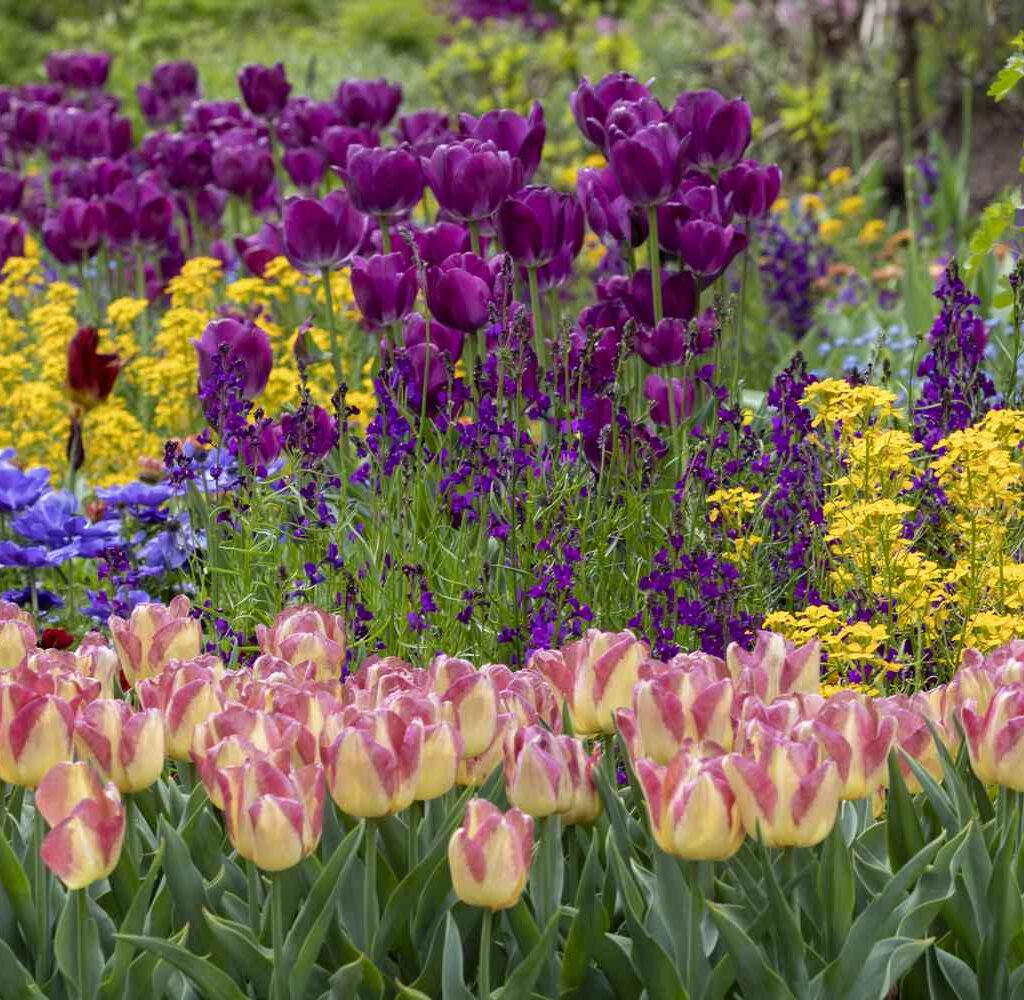
Healthy soil is essential for spring bulbs to thrive:
- Well-draining soil prevents waterlogging and rot.
- Slightly acidic to neutral pH (6.0–7.0) is ideal.
- Enrich soil with compost or bulb fertilizer for nutrients.
- Loosen soil to a depth of 8–12 inches to allow root development.
Proper soil preparation ensures bulbs establish strong roots and access nutrients for vibrant blooms.
Planting Techniques for Gorgeous Blooms
Correct planting depth and spacing are crucial:
- Planting Depth
- Rule of thumb: 3 times the bulb’s height.
- Tulips: 6–8 inches deep
- Daffodils: 6 inches deep
- Crocuses: 3–4 inches deep
- Spacing
- Allow enough room for growth: 2–6 inches apart depending on bulb size.
- Dense clusters create dramatic visual effects, while single bulbs add accent points.
- Orientation
- Plant bulbs pointed end up, roots down.
- This ensures upward growth and proper flower development.
- Watering After Planting
- Water bulbs immediately after planting to settle soil and stimulate root growth.
- Avoid overwatering, which can cause rot.
Mulching and Winter Protection
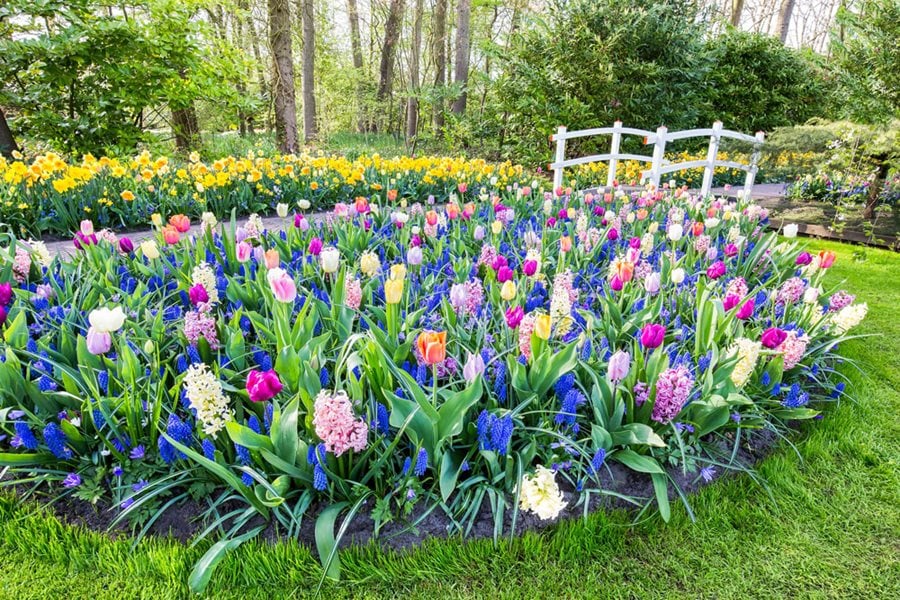
Mulching helps insulate bulbs and maintain consistent soil moisture:
- Apply 2–4 inches of mulch such as straw, shredded leaves, or bark.
- Mulch protects against temperature fluctuations and frost heaving.
- In colder climates, remove heavy mulch in early spring to encourage growth.
Winter protection ensures bulbs survive harsh conditions and bloom robustly.
Caring for Spring Bulbs
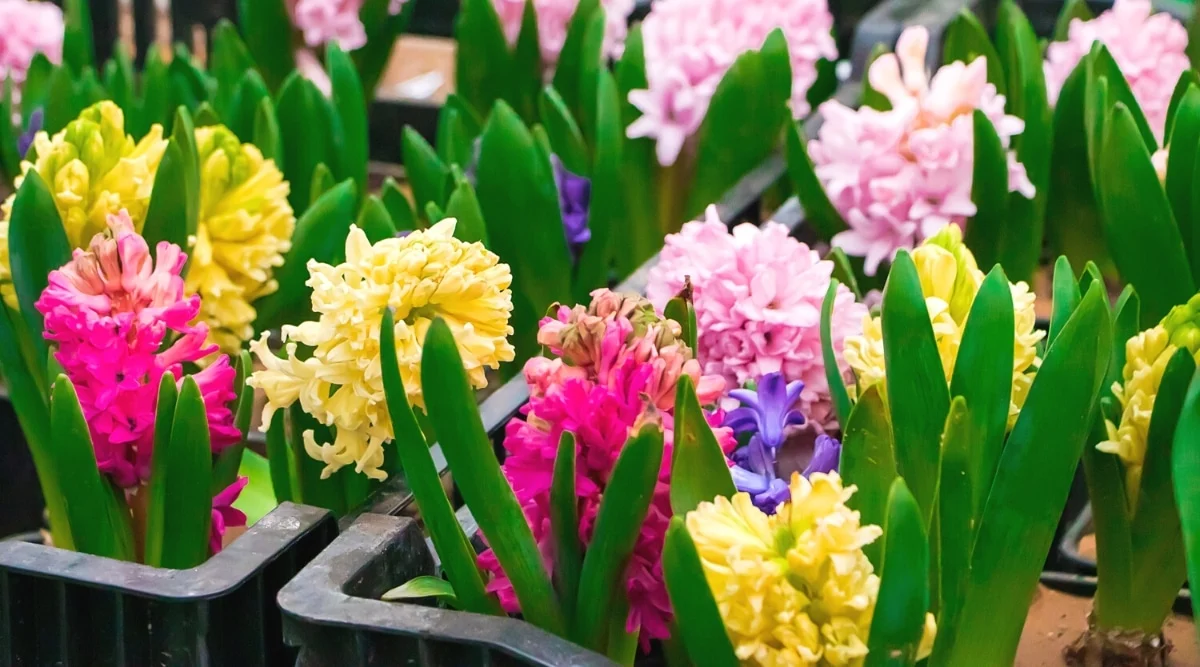
Once planted, bulbs need minimal but strategic care:
- Watering
- Keep soil moderately moist until frost.
- Reduce watering during dormancy unless the soil is extremely dry.
- Fertilization
- Apply slow-release bulb fertilizer at planting and again in early spring as shoots emerge.
- Weed Control
- Keep beds weed-free to reduce competition for nutrients and water.
- Pest Management
- Protect bulbs from rodents and squirrels using wire cages or netting.
- Inspect for fungal infections or rot in spring.
Proper care ensures healthy foliage and vibrant flowers, enhancing the overall garden display.
Planning for Continuous Bloom
For a long-lasting display:
- Mix early, mid, and late-blooming varieties to extend flowering season.
- Layer bulbs in clusters or drifts for visual impact.
- Consider companion planting with perennials that emerge after bulbs fade to maintain garden interest.
Staggered bloom times keep your garden colorful from early spring through late spring.
Using Containers and Small Spaces
Spring bulbs aren’t limited to garden beds:
- Containers allow you to plant bulbs on patios, balconies, or windowsills.
- Use well-draining potting mix and ensure bulbs are planted at the right depth.
- Container bulbs may require slightly earlier planting and extra winter protection.
Even small spaces can enjoy gorgeous spring blooms with proper planning.
Troubleshooting Common Bulb Issues
- Rotting bulbs – Caused by waterlogged soil; ensure proper drainage.
- Delayed or no flowering – Could result from shallow planting or insufficient cold exposure.
- Rodent damage – Protect bulbs with cages or repellents.
- Weak foliage – Fertilize properly and avoid cutting leaves too early after blooming.
Addressing issues promptly ensures healthy, vibrant blooms year after year.
Conclusion
Planting spring bulbs at the right time is the key to a vibrant, colorful garden. From choosing the right planting window to preparing soil, planting correctly, protecting bulbs through winter, and providing proper care, each step contributes to gorgeous spring blooms.
By understanding your climate, following planting guidelines, and planning for continuous bloom, you can enjoy a stunning, long-lasting display of tulips, daffodils, crocuses, hyacinths, and more. Proper planning ensures that each spring, your garden bursts to life, creating a beautiful, fragrant, and welcoming outdoor space.
Spring bulbs are more than just flowers—they’re a promise of renewal, beauty, and joy after the cold winter months. With careful preparation, your garden can deliver breathtaking blooms year after year.
